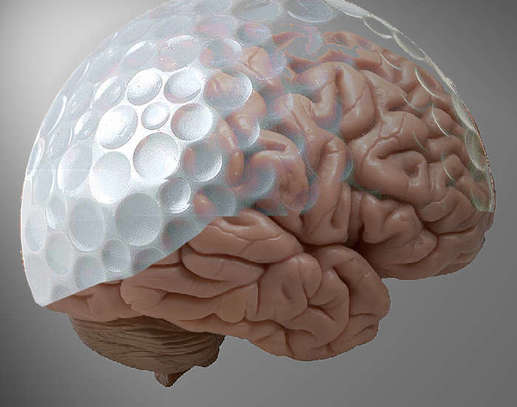- HOME・ホーム
-
日本語
-
About Tom Fielding Golfについて
- Teaching Philosophy
- Privacy Policy
- Tom Fielding Golf School Japan - Golf Improvement BLOG
-
Blog and News Updates
>
- How good a golfer are you right now
- How Far Should I Hit My 7 Iron?
- Most Golf Fitness Misses the Mark Completely
- The Mid Round Slump!
- Take This Quick Strike Test To See What Level You Are
- Golf Camps・ゴルフ合宿
- 2019 Summer Golf camp photo galleries
- JP-3 day / 2 night: Golf Camp 3日・2泊ゴルフ合宿
- EN-3 day / 2 night: Golf Camp
- APRIL/MAY2019 Newsletter: EN version
- February 2019 Newsletter: EN version
- February 2019 Newsletter: JP version
- Golf Fitness
- Why is change so difficult
-
Lesson Articles
>
- How To Practice Golf At Home – 6 Steps To Practicing At Home
- Internal & External focus - JP
- Pro Golfers are not that good
- 3 essentials for CONSISTENCY IN GOLF
- The Golf Swing and negative words
- Beat the Heat
- Hot Weather Guidelines
- Swing Radius
- Exclusive 4 steps for improved ball striking
- Hitting from different lies
- Weight transference
- POSTURE
- Training in different climates
- Fitness Friday: Preparing for a cold-weather round
- How far will the golf ball go in cold weather
- TrackMan: Definitive Answers at Impact and More
- Clearing the left side too early is damaging.
- The Ball Flight Laws
- Head Position
- Distance = Club Head Speed + Square Impact + launch angle
- Attention! The Pre-Shot Routine
- The Basic Skill of Chipping
- 4 stages of learning
- How to Break 90 - Part 1
- How to Break 90 #2
- How to Learn a Great Golf Swing
- Perfect Practise makes practise.
- 3 Essentials to breaking a habit
- Basic principles of exercise - Points to bring out the maximum practicing effect
- Things to consider before aiming at the flagstick
- Learnig motor skills: The GOLF Swing
- RULES OF GOLF PAGE >
- Golf Humour >
-
ゴルフスクール Menu
- 2024 SUMMER Golf Camp in Japan-EN >
- 2024SGC-JP サマーゴルフ
- Melbourne Golf Tour: March 2025
- Teaching locations: Lessons inquires & bookings >
- Trial Golf Lesson >
- 2 hole Private・貸切 training program
- 1/2 day Golf School: Kashikiri program@Morinagatakako CC
- Internet Golf Lesson >
- Testimonials Customer feedback
-
Photo / Video Gallery
- 2023 Summer gof camp photo gallery
- 2022 Summer Golf Camp - Photo Gallery
- 1 / 2 day golf camp - Photo gallery
- 2021 Summer Golf Camp - photo gallery
- 2020 Summer golf camp@ Appi Kogen Iwate prefecture
- 2019 Summer Golf camp photo gallery
- Summer golf camp 2018 photo gallery
- Photo Gallery from the Australia Vs Japan Junior challenge
- 2017 5周年のSummer golf camp-Photo/Video gallery
- 2016 4周年のSummer Golf Camp Photo Gallery
- 2015 The 3rd Summer Golf Camp @ Pelican Waters Golf Resort
- 2014 Summer Golf camp photo gallery
- 2013 Summer Golf Camp at Pelican Waters, Sunshine Coast, Queensland Australia.
- 2014 The 3rd Students Cup Pro-Am 2014 - Photo Gallery
- 2013 The 2nd Students Cup Pro-Am 2013
- Video Gallery
3 Essentials for Consistency in Golf.
Looking to become more consistent?
While this is predominantly about golf, the information in this could apply to many sports. I am going to discuss my model of consistency. Understanding these 3 pillars can help you determine what you need to improve more of, and will give you a clearer vision of where you ideally want to head with your golf game/training.
My 3 pillars of consistency are
While this is predominantly about golf, the information in this could apply to many sports. I am going to discuss my model of consistency. Understanding these 3 pillars can help you determine what you need to improve more of, and will give you a clearer vision of where you ideally want to head with your golf game/training.
My 3 pillars of consistency are
- Technical consistency
- Biological consistency
- Mental consistency
BIOMECHANICAL CONSISTENCY
"I’m not consistent"
This is the number one thing I hear from players on the lesson tee. Yet, time and time again, I see that they are actually very consistent. Consistent in the sense that they are doing the same thing within an acceptable degree of human variability.
You see, as humans, we always have movement variability. We can never repeat the same motion exactly twice – not even the best players in the world. Even as far back as 1922, Nickolai Bernstein found that, even though advanced blacksmiths hit a nail with great proficiency, they did so with varying movements each time.
Even when we look at the task, which tends to be less variable, there is also a normal and acceptable amount of result range. For example, a player trying to strike the sweet spot may see a pattern like this.
This is the number one thing I hear from players on the lesson tee. Yet, time and time again, I see that they are actually very consistent. Consistent in the sense that they are doing the same thing within an acceptable degree of human variability.
You see, as humans, we always have movement variability. We can never repeat the same motion exactly twice – not even the best players in the world. Even as far back as 1922, Nickolai Bernstein found that, even though advanced blacksmiths hit a nail with great proficiency, they did so with varying movements each time.
Even when we look at the task, which tends to be less variable, there is also a normal and acceptable amount of result range. For example, a player trying to strike the sweet spot may see a pattern like this.
This would be classed as high biological consistency, as the range is very tight (not a big standard deviation from the average). This would be quite typical of a scratch player’s range of strikes.
However, the below picture also shows high biological consistency.
However, the below picture also shows high biological consistency.
This is a typical strike pattern for a shanker. They often come onto my lesson tee complaining of a lack of consistency. Ironically, they are often as consistent as a tour pro in terms of strike pattern/movement variability (biological consistency).
The below picture shows a poorer level of biological consistency.
The below picture shows a poorer level of biological consistency.
We typically see low biological consistency in players who have had very little practice, or who are new to the game and have not had chance to ingrain anything yet. Biological consistency tends to automatically increase over time with more practice.
Low biological consistency is not always a bad thing. For example, would you rather be the player with the bigger range which is more centred, or the player with the very tight range which is dotted around the shank?
To summarise, biological consistency is the variability of the effects of the movement – specifically during club/ball impact.
Low biological consistency is not always a bad thing. For example, would you rather be the player with the bigger range which is more centred, or the player with the very tight range which is dotted around the shank?
To summarise, biological consistency is the variability of the effects of the movement – specifically during club/ball impact.
TECHNICAL CONSISTENCY
What if a certain technique gave you better results with a certain biological consistency? That would be technical consistency – let me explain.
The below picture shows the ground contact ranges for two different players.
The below picture shows the ground contact ranges for two different players.
The thick white line represents ground contact ranges. You could argue that both have the same amount of movement variability (biological consistency), as the range of ground strikes are the same (about 2 inches from front to back). However, Player B would have higher technical consistency.
If player A were to hit the front end of their range (the ground contact closest to the ball), they would hit a pretty decent shot. However, if they hit the back end of their range, they would likely lose a lot of distance.
However, even though the movement repeatability (biological consistency) of player B is the same as player A, if this player were to hit the front or back end of their movement ranges, they would have better overall results due to their higher technical consistency.
The movements/impacts are as repeatable as one another, yet player B has better technical consistency and thus better results.
In fact, it is possible to increase your technical consistency while decreasing your biological consistency. See the below picture.
If player A were to hit the front end of their range (the ground contact closest to the ball), they would hit a pretty decent shot. However, if they hit the back end of their range, they would likely lose a lot of distance.
However, even though the movement repeatability (biological consistency) of player B is the same as player A, if this player were to hit the front or back end of their movement ranges, they would have better overall results due to their higher technical consistency.
The movements/impacts are as repeatable as one another, yet player B has better technical consistency and thus better results.
In fact, it is possible to increase your technical consistency while decreasing your biological consistency. See the below picture.
Player A has low biological consistency, but higher technical consistency
Player B has higher biological consistency, but lower technical consistency
As a result, all else being equal, player A would get more consistent results than player B. Player B would hit a few ok shots, but would throw in a few stinkers which completely ruins their standard deviation from the average.
So, when you say you want to be more consistent, which type of consistency are you asking for? Player B needs more technical consistency. Player A needs more biological consistency. Both require different strategies.
To summarise – technical consistency is where you achieve more repeatable results with the same biological variability. For example, achieving better results with the same ranges of ground/face strikes.
Player B has higher biological consistency, but lower technical consistency
As a result, all else being equal, player A would get more consistent results than player B. Player B would hit a few ok shots, but would throw in a few stinkers which completely ruins their standard deviation from the average.
So, when you say you want to be more consistent, which type of consistency are you asking for? Player B needs more technical consistency. Player A needs more biological consistency. Both require different strategies.
To summarise – technical consistency is where you achieve more repeatable results with the same biological variability. For example, achieving better results with the same ranges of ground/face strikes.
MENTAL CONSISTENCY
While this one is tough to pin down with an exact definition, most people will understand this. Basically;
We often see this in good quality players who have suffered with a poor round under pressure. They may have great biological consistency from all the reps they have put in and years of honing and ingraining their swing. They may have great technical consistency too – big margins for error and sound impact fundamentals. Yet, under the gun, some big changes occur mentally and their game goes down the drain.
Maybe you know this guy – maybe it’s you!
The opposite can be true – many people (when they play their best) report having one swing thought/key, or even zoning out completely. Coaches are currently exploring this phenomenon with the use of something called a ‘focus band’, which measures certain brain activity. Many people using it report a sense of lowered conscious thought and are reporting consistent/better performances.
To summarise – mental consistency is how your thought processes affect the biomechanics and technical consistency.
- your level of conscious interference
- amount of swing thoughts
- type of swing thought
We often see this in good quality players who have suffered with a poor round under pressure. They may have great biological consistency from all the reps they have put in and years of honing and ingraining their swing. They may have great technical consistency too – big margins for error and sound impact fundamentals. Yet, under the gun, some big changes occur mentally and their game goes down the drain.
Maybe you know this guy – maybe it’s you!
The opposite can be true – many people (when they play their best) report having one swing thought/key, or even zoning out completely. Coaches are currently exploring this phenomenon with the use of something called a ‘focus band’, which measures certain brain activity. Many people using it report a sense of lowered conscious thought and are reporting consistent/better performances.
To summarise – mental consistency is how your thought processes affect the biomechanics and technical consistency.
HOW THEY RELATE
These 3 pillars all interconnect and affect each other.
IMPROVING TECHNICAL CONSISTENCY
Improving technical consistency usually (but doesn’t always have to) requires a conscious intervention. In other words, we need to consciously attempt to change the movement.
While we may (depending on how good we are at actually producing the desired technique change) improve and increase technical consistency, we often see
Improving technical consistency usually (but doesn’t always have to) requires a conscious intervention. In other words, we need to consciously attempt to change the movement.
While we may (depending on how good we are at actually producing the desired technique change) improve and increase technical consistency, we often see
- A reduction in mental consistency, due to the increased mental interference and unfamiliarity of the thought process. Also, studies have shown increased negative movement variability (variability which takes you away from your goal) when we introduce certain swing thoughts – specifically internal swing thoughts. This then manifest itself into…..
- Reduced biological consistency. This is because a new technique is not ingrained – the mind and body links are not well formed, the myelination process in the brain has not built up, the body conditioning (mobility, flexibility, plane specific strength) has not had time to develop etc.
INCREASING MENTAL CONSISTENCY
This can take different forms for different people, depending upon the issues.
For some, it might be changing their thought process from an ‘internal movement focus’ to an ‘external task focus’ (shown to decrease biological variability). For others, it might be focusing on something not related to the movement or task at all (neutral focus – shown to work well for people with ingrained skills). And some people who are analytical and have 10-20 different swing thoughts per round, perhaps adding one simple focus could help to de-clutter.
Either way, when mental consistency is improved, we normally see an increase in biological or technical consistency too (depending on what thought process was used).
This can take different forms for different people, depending upon the issues.
For some, it might be changing their thought process from an ‘internal movement focus’ to an ‘external task focus’ (shown to decrease biological variability). For others, it might be focusing on something not related to the movement or task at all (neutral focus – shown to work well for people with ingrained skills). And some people who are analytical and have 10-20 different swing thoughts per round, perhaps adding one simple focus could help to de-clutter.
Either way, when mental consistency is improved, we normally see an increase in biological or technical consistency too (depending on what thought process was used).
INCREASING BIOLOGICAL CONSISTENCY
Probably the greatest way we can improve biological consistency is through repetition. The act of repeating something over and over improves the brain’s connections (myelination/cortical remapping etc), the brain-body connection (neuromuscular conditioning), and the body conditioning (mobility, flexibility, plane specific strength etc) making the ingrained move the path of least resistance. Also, through repetition, we become better able to coordinate all the degrees of freedom (limbs etc) into a workable technique.
Also, repeating something a lot means that we require less conscious processing in order to produce the movement – meaning we don’t have to think as much about the move. Similar to how you don’t have to think about how to sign your name, because you have done it so many times. This lowered conscious effort manifests itself into increased mental consistency which manifests itself further into increased biological consistency.
Probably the greatest way we can improve biological consistency is through repetition. The act of repeating something over and over improves the brain’s connections (myelination/cortical remapping etc), the brain-body connection (neuromuscular conditioning), and the body conditioning (mobility, flexibility, plane specific strength etc) making the ingrained move the path of least resistance. Also, through repetition, we become better able to coordinate all the degrees of freedom (limbs etc) into a workable technique.
Also, repeating something a lot means that we require less conscious processing in order to produce the movement – meaning we don’t have to think as much about the move. Similar to how you don’t have to think about how to sign your name, because you have done it so many times. This lowered conscious effort manifests itself into increased mental consistency which manifests itself further into increased biological consistency.
By practicing something enough, we are better able to do it without effortful thought
In fact, for many people (apart from beginners), lowering conscious thought about the movement can often bring about increased biological consistency (via increased mental consistency). This is why players with good skills ingrained often see benefit from a neutral focus (such as breathing or counting). However, for worse players, these neutral foci can make you consistently poor.
This is not to say that standing on the range and beating as many balls as you can is the best way to go. In fact, random practice (repetition without repetition) has been shown to be more effective in learning. However, the only thing that beats ‘reps’ is ‘quality reps’.
In fact, for many people (apart from beginners), lowering conscious thought about the movement can often bring about increased biological consistency (via increased mental consistency). This is why players with good skills ingrained often see benefit from a neutral focus (such as breathing or counting). However, for worse players, these neutral foci can make you consistently poor.
This is not to say that standing on the range and beating as many balls as you can is the best way to go. In fact, random practice (repetition without repetition) has been shown to be more effective in learning. However, the only thing that beats ‘reps’ is ‘quality reps’.
WHY IS THIS IMPORTANT?
This is not just mental masturbation – it serves a purpose.
Different changes have different effects – and these effects can vary for different players. As a coach, I am better able to predict how an intervention is going to affect the three consistencies, and what effect that would have on their game/results. This allows me to determine and predict if a change will be worth it and appropriate (time wise).
As a real world example, if a player is about to play a tournament, you likely don’t want to add a technical though to their game at this point because it would likely negatively affect mental and biological consistency. However, this rule can be thrown out of the window if they are hitting it awful and a technical consistency improvement would override the lowered bio/mental consistency.
Alternatively, if I had a player who is normally solid, but they arrive on tournament day hitting it all over the place and have a ton of different swing thoughts in their mind, I might implement a neutral focus (a conscious distraction technique). This would reduce their thought processes to one thing – and, in most cases, it reduces biological variability and brings the ranges in tighter. So, if a player were spraying the ball everywhere, a neutral focus can often reduce this dispersion in better players.
Different changes have different effects – and these effects can vary for different players. As a coach, I am better able to predict how an intervention is going to affect the three consistencies, and what effect that would have on their game/results. This allows me to determine and predict if a change will be worth it and appropriate (time wise).
As a real world example, if a player is about to play a tournament, you likely don’t want to add a technical though to their game at this point because it would likely negatively affect mental and biological consistency. However, this rule can be thrown out of the window if they are hitting it awful and a technical consistency improvement would override the lowered bio/mental consistency.
Alternatively, if I had a player who is normally solid, but they arrive on tournament day hitting it all over the place and have a ton of different swing thoughts in their mind, I might implement a neutral focus (a conscious distraction technique). This would reduce their thought processes to one thing – and, in most cases, it reduces biological variability and brings the ranges in tighter. So, if a player were spraying the ball everywhere, a neutral focus can often reduce this dispersion in better players.
A COMMON PITFALL
One thing I often see golfers fall into the trap of is working on and changing their swings constantly.
Doing this means you are only chasing one of the pillars of consistency – technical consistency. But, by constantly tinkering with your swing, you never reap the benefits of mental and biological consistency.
Doing this means you are only chasing one of the pillars of consistency – technical consistency. But, by constantly tinkering with your swing, you never reap the benefits of mental and biological consistency.
- HOME・ホーム
-
日本語
-
About Tom Fielding Golfについて
- Teaching Philosophy
- Privacy Policy
- Tom Fielding Golf School Japan - Golf Improvement BLOG
-
Blog and News Updates
>
- How good a golfer are you right now
- How Far Should I Hit My 7 Iron?
- Most Golf Fitness Misses the Mark Completely
- The Mid Round Slump!
- Take This Quick Strike Test To See What Level You Are
- Golf Camps・ゴルフ合宿
- 2019 Summer Golf camp photo galleries
- JP-3 day / 2 night: Golf Camp 3日・2泊ゴルフ合宿
- EN-3 day / 2 night: Golf Camp
- APRIL/MAY2019 Newsletter: EN version
- February 2019 Newsletter: EN version
- February 2019 Newsletter: JP version
- Golf Fitness
- Why is change so difficult
-
Lesson Articles
>
- How To Practice Golf At Home – 6 Steps To Practicing At Home
- Internal & External focus - JP
- Pro Golfers are not that good
- 3 essentials for CONSISTENCY IN GOLF
- The Golf Swing and negative words
- Beat the Heat
- Hot Weather Guidelines
- Swing Radius
- Exclusive 4 steps for improved ball striking
- Hitting from different lies
- Weight transference
- POSTURE
- Training in different climates
- Fitness Friday: Preparing for a cold-weather round
- How far will the golf ball go in cold weather
- TrackMan: Definitive Answers at Impact and More
- Clearing the left side too early is damaging.
- The Ball Flight Laws
- Head Position
- Distance = Club Head Speed + Square Impact + launch angle
- Attention! The Pre-Shot Routine
- The Basic Skill of Chipping
- 4 stages of learning
- How to Break 90 - Part 1
- How to Break 90 #2
- How to Learn a Great Golf Swing
- Perfect Practise makes practise.
- 3 Essentials to breaking a habit
- Basic principles of exercise - Points to bring out the maximum practicing effect
- Things to consider before aiming at the flagstick
- Learnig motor skills: The GOLF Swing
- RULES OF GOLF PAGE >
- Golf Humour >
-
ゴルフスクール Menu
- 2024 SUMMER Golf Camp in Japan-EN >
- 2024SGC-JP サマーゴルフ
- Melbourne Golf Tour: March 2025
- Teaching locations: Lessons inquires & bookings >
- Trial Golf Lesson >
- 2 hole Private・貸切 training program
- 1/2 day Golf School: Kashikiri program@Morinagatakako CC
- Internet Golf Lesson >
- Testimonials Customer feedback
-
Photo / Video Gallery
- 2023 Summer gof camp photo gallery
- 2022 Summer Golf Camp - Photo Gallery
- 1 / 2 day golf camp - Photo gallery
- 2021 Summer Golf Camp - photo gallery
- 2020 Summer golf camp@ Appi Kogen Iwate prefecture
- 2019 Summer Golf camp photo gallery
- Summer golf camp 2018 photo gallery
- Photo Gallery from the Australia Vs Japan Junior challenge
- 2017 5周年のSummer golf camp-Photo/Video gallery
- 2016 4周年のSummer Golf Camp Photo Gallery
- 2015 The 3rd Summer Golf Camp @ Pelican Waters Golf Resort
- 2014 Summer Golf camp photo gallery
- 2013 Summer Golf Camp at Pelican Waters, Sunshine Coast, Queensland Australia.
- 2014 The 3rd Students Cup Pro-Am 2014 - Photo Gallery
- 2013 The 2nd Students Cup Pro-Am 2013
- Video Gallery






